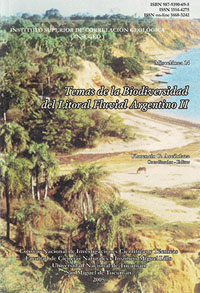Miscelánea 14
Consideraciones sobre el funcionamiento de los sistemas de transferencia para peces en las represas de los ríos de la porción inferior de la Cuenca del Plata
Norberto Oldani | Claudio Baigún | Ricardo L. Delfino
Descargar trabajo en formato PDFAbstract
SOME CONSIDERATIONS ON THE PERFORMANCE OF FISH PASSAGE SYSTEMS AT THE DAMS LOCATED ON THE RIVERS OF LOWER RIO DE LA PLATA BASIN. Large rivers damming originates severe impacts on local and regional fauna and flora. Large rivers of the Río de la Plata basin are inhabited by fish communities with migratory populations, exhibiting large size fish that are very important for commercial and recreational fishery. The worlwide impact of dams has stimulated the constructions of fish passage facilities to allow fish migrations. The design of such facilities in South America, however, lacks a sound background information and is still debated. Pool and weir systems -very common for salmonid passage in the northern hemisphere- appear as the most common system design built in the upper basin. In the lower basin, Yacyretá dam (Paraná River) has installed two mechanic elevators whereas Salto Grande dam (Uruguay River) has two Borland type locks. Elevators efficiency is less than 1% for migratory species due to design failures and unsuitable geographical location. In Salto Grande dam efficiency is still unknown, but locks do not allow a massive upstream migration. Since migrations in the Río de la Plata basin are complex, we encourage to modify current assessment criteria and move to a bioengineering approach based on sound biological and environmental information that needs to be acquired prior to the dam construction. This study aims to summarize the fish passage facilities performance of the lower Río de la Plata basin, assess possible factors limiting their efficiency and to discuss criteria to reduce dam impacts on migratory fish populations in large South American rivers.






